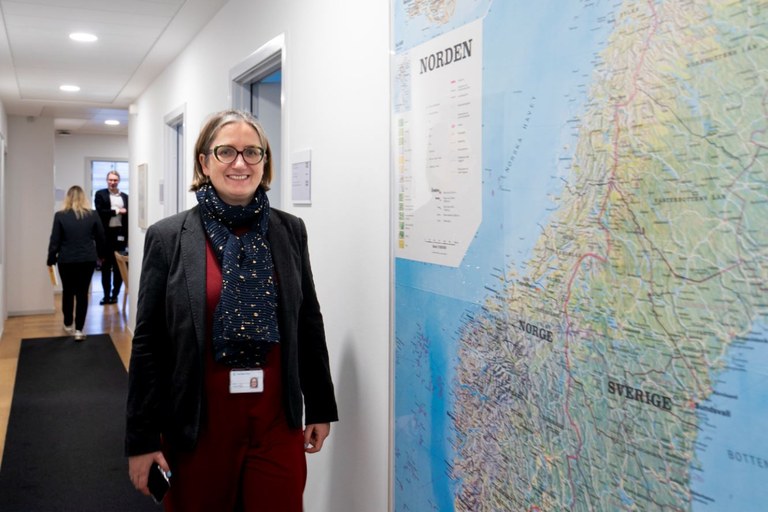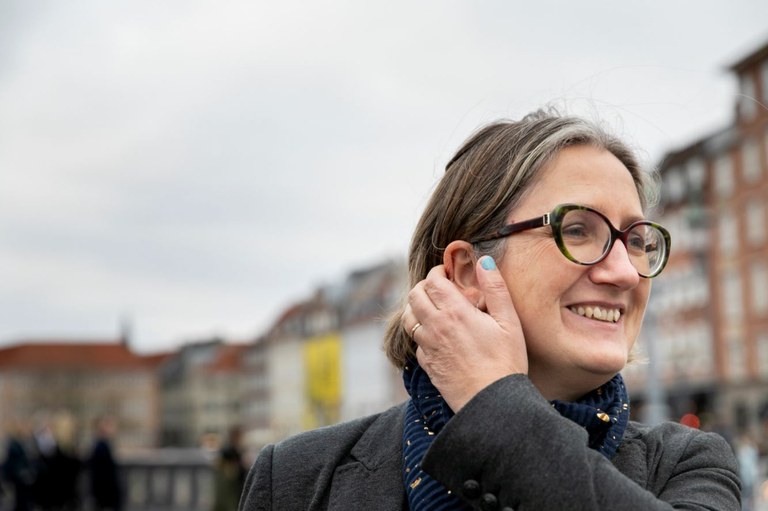The Nordic Council of Ministers’ vision for 2030
“Now the work begins for real,” says Helle Engslund Krarup, Deputy Chief of Staff at the Secretary General’s office. At the end of an intensive process, the Nordic cooperation has a new vision. But how to execute it, and what must give in order to reach the goals within the same budget? The first answers will come in early February.
The vision signed by the Nordic Prime Ministers in Reykjavik in August last year says the Nordic region should be “the world’s most sustainable and integrated region in 2030”.
To reach that goal, three areas are prioritised:
- A green Nordic region. The countries will work together to promote a green transition of their societies and work towards carbon neutrality and a sustainable circular and bio-based economy.
- A competitive Nordic region. Green growth in the Nordic region should be based on knowledge, innovation, mobility and digital integration.
- A socially sustainable Nordic Region. The countries will promote an inclusive, equal and interconnected region with shared values and strengthened cultural exchange and welfare.
Three cross-sector action plans
Helle Engslund Krarup now leads the work for turning visions into action plans at the Nordic Council of Ministers.
“The vision has a ten-year horizon, but the action plans will initially cover 2021 to 2024."
The end result will be three cross-sector action plans – one each for those three strategic points. With five countries, three autonomous regions and eleven ministerial councils – some of which cover so many areas that they supply three different inputs – there must be a lot of adjustments to be made?
“The Council of Ministers has coordinated the whole thing in such a way that I get one or several inputs from each ministerial council. We also have some working groups that provide their own inputs. But you do end up with quite a few jigsaw pieces,” says Helle Engslund Krarup.

Great changes
The result could be one of the largest changes to the Nordic cooperation for many years. Helle Engslund Krarup has spent six years working at the Council of Ministers, and also worked with the same issues under the previous Secretary General. She witnessed how the operation changed during that time.
“Gradually, more space for even more change has been created. Some of the things we do today we could not have done five years ago because the system was not ready for it.”
Do you have any examples?
“We have been working towards creating a more flexible budget. The Nordic cooperation budget has tended to remain unchanged year after year. The budget is partly historically linked. We have spent much of it on culture and education. This is where the Nordic cooperation began. But it might be wise to consider whether this is where the money should be used now, in light of the challenges we are facing.
“It is of course the individual countries that decides how larghe the changes will be. But the fact that we have only had minor budget changes in the past, has been a challenge for us.
“If everything which is on the table right now is to be executed, we are facing some considerable change.”
The first signals come in February
The Nordic Ministers of Cooperation will reveal the size of the changes in February, as they decide on a budget for 2021.
“If there is to be a reallocation of funds, this is where we will see it happening. All we have done is to prepare for the debate. I think it would be useful to focus on the operation, but I also know that this is difficult because there are so many interests to take into consideration.”
Is the one billion Danish kroner budget limit for the Nordic cooperation a red line? This year’s budget is 960 million.
“That budget limit has been pretty stable for some years now. I have not heard any about any immediate changes. But you will hear voices saying that if you compare the budget to regional GDP developments, it has shrunk in relation to the economies of the Nordics.”
Do you get any signals indicating the budget will face considerable cuts?
“No I don’t. But what we are delivering now is making the operation more efficient. If we can do that and communicate this externally, I believe we will get support for a budget that is approximately the same size as what we have today.
“When I say making things more efficient, I think this is partly about being able to better document what we are doing, beyond further digitalisation or similar measures. Five, six years ago we did experience cuts that lasted for three years.”
What is the link between the vision and the international branding of the Nordics? Do you talk to each other?
“The vision is aimed at the Nordic region, and on what we want to achieve here. It says we will be the world’s most integrated region, which definitely plays to something – but the major focus has been on the "power of example”, to show what we are doing, rather than running a campaign for our vision abroad.
“You could say that the vision is a kind of intra-Nordic branding.”

Do you look to any other regions for inspiration, for instance the Benelux countries?
“Benelux does come up in conversation now and again, but the Nordic region is quite unique. It is a good idea to look abroad, but I don't think there are other regions as integrated as we are.”
Helle Engslund Krarup feels it makes little sense to pitch the Nordics against the EU. Sure, the EU is pursuing an integration agenda through its legislation, also in the Nordic region. But since the Nordics are so integrated already, we can also work together in areas which other, more recent EU member states would find impossible to do.
“Our focus inside the new vision does not differ that much from the current focus elsewhere in Europe. Perhaps it would be stranger if that was the case? The challenges as described in the vision transcend borders after all.”
More international cooperation
The Council of Ministers has also to an increasing extent been used to address international issues.
“We had representatives at the COP 25 in Madrid, with our own pavilion. But we don’t participate in the climate negotiations as the Nordic region. The individual countries act on their own. The Council of Ministers can be important in the early phases as well as the latest ones, when things are to be implemented. The Nordics do not always agree with the EU, it depends on the issue.
“Over the years there has also been a certain reluctance to do things that would make us appear as a Nordic block. But I think that Brexit among other things has shown the need for greater coordination between the Nordics. It also makes a difference if you arrive as the Nordics rather than a single country when you propose something to the EU Commission.”
Does it feel like this is a time where major changes are taking place, a bit like when the Berlin Wall came down?
“I have just returned from Berlin, and I’ve been thinking a lot about this. That time there were big, positive changes. Now it’s the opposite – big, negative changes that represent a threat. We might see a blossoming of the Nordic cooperation when international challenges increase, but we are expected to deliver results.”
And there is a lot of talk about social sustainability in the strategic planning?
“Much of the political conversation between Prime Ministers and Ministers for Cooperation focuses on how the green change can be carried out without too much social impact. We must prevent the creation of large social disquiet, like we see with the gillet jeunes in France.
“Some of the changes will hurt, when you go from fossil to renewable energy, eat less meat and so on. The question is how do we get everyone on board? And how will this happen in relation to the existing competencies in the labour market?
“It is a big task to communicate this change which we must make together. The big test will be whether we as societies will manage to do it, so that it does not turn into a project for the elites,” says Helle Engslund Krarup.
- Theme content
-
A Monday in the service of the Nordics
Inspired by TED Talks: Nordic podcast launch in the USA
New profile leaves Nordic traces around the world
"More hard issues should be discussed at the Nordic Council"
Iceland: Paternity leave a boost to men’s identity
The Nordics: practical and industrious cooperation
The Nordic Council of Ministers’ vision for 2030
 Follow us on Facebook
Follow us on Facebook
